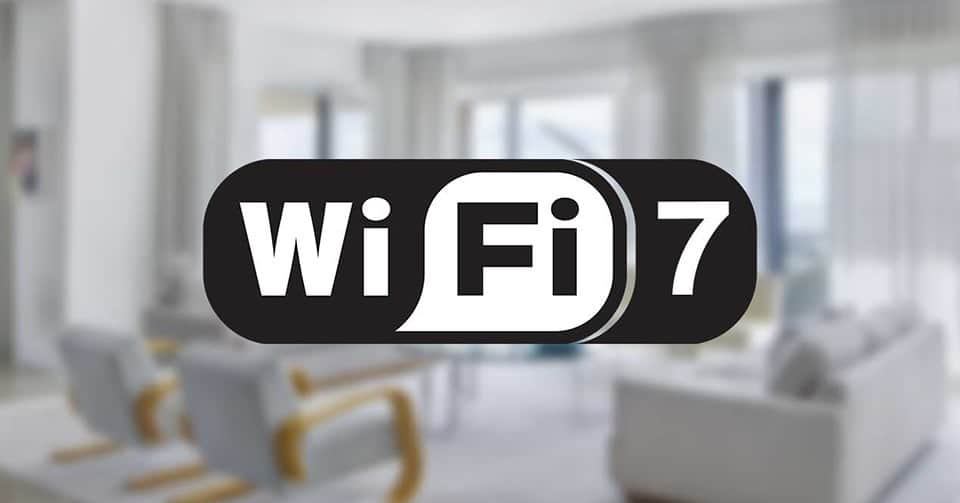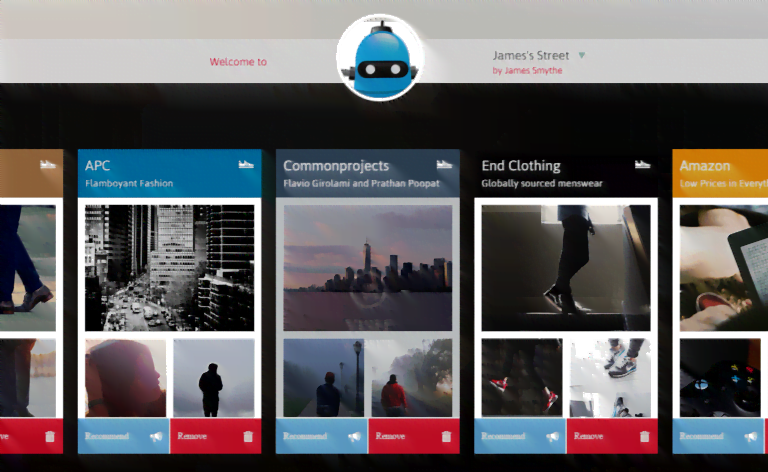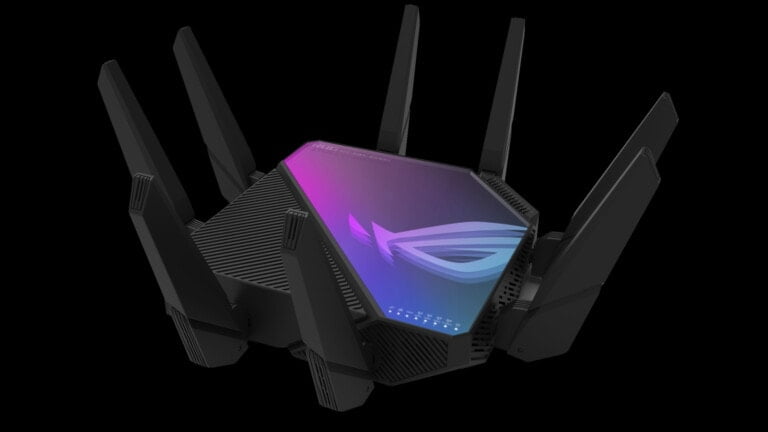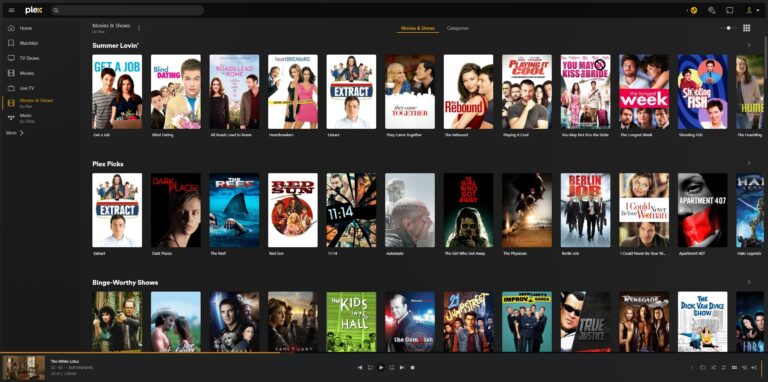Any links to online stores should be assumed to be affiliates. The company or PR agency provides all or most review samples. They have no control over my content, and I provide my honest opinion.
I am almost finishing up my review of the Netgear RBKE960 Orbi Mesh Wi-Fi 6E System, one of the first Wi-Fi 6E devices to hit the market in the UK.
However, Mediatek is already gearing up for Wi-Fi 7. Today they have announced the world’s first live demo of Wi-Fi 7 technology, highlighting the capabilities of its forthcoming Wi-Fi 7 Filogic connectivity portfolio. MediaTek is currently showcasing two Wi-Fi 7 demos to key customers and industry collaborators to demonstrate the technology’s super-fast speeds and low latency transmission.
With Wi-Fi 6 only just becoming mainstream, and Wi-Fi 6E hardware obscenely expensive, you may wonder what’s new with Wi-Fi 7?
Wi-Fi 7 vs Wi-Fi 6 – What’s new and improved?
A quick overview:
- Wi-Fi 7 supports up to 320MHz channel width on the 6Ghz band, double the width possible with previous generations. This would provide 1.2Gbps per stream (160MHz) to 2.4Gbps per stream (320MHz). So a 4×4 broadcaster can have up to 9.6Gbps of bandwidth.
- In reality, assuming a 2×2 client like current hardware, you would be able to connect at up to 4.8Gbps.
- Wi-Fi 7 quadruples the QAM to 4096. This is basically how much information can be provided per hertz,
- Wi-Fi 7 also supports up to 16 partial streams with a possible 40Gbps of bandwidth taking into account the increased QAM.
- Wi-Fi 7 implements multi-link operation, which allows it to combine two bands into one, such as 5GHz and 6Ghz. This then works either as a load balance or failover. The load balancer allows combining the bandwidth of both bands into a single link for improved bandwidth.
Therefore, Wi-Fi 7 should offer some serious improvements in Wi-Fi speeds, and Mediatek are claiming that this is the first time that Wi-Fi can be a true Ethernet replacement for super high-bandwidth applications.
Products with Wi-Fi 7 are expected to hit the market starting in 2023.
Full Press Release
MediaTek today announced the world’s first live demo of Wi-Fi 7 technology, highlighting the capabilities of its forthcoming Wi-Fi 7 Filogic connectivity portfolio.
MediaTek is currently showcasing two Wi-Fi 7 demos to key customers and industry collaborators to demonstrate the technology’s super-fast speeds and low latency transmission.
“The rollout of Wi-Fi 7 will mark the first time that Wi-Fi can be a true wireline/Ethernet replacement for super high-bandwidth applications,” said Alan Hsu, corporate vice president and general manager of the Intelligent Connectivity business at MediaTek. “MediaTek’s Wi-Fi 7 technology will be the backbone of home, office and industrial networks and provide seamless connectivity for everything from multi-player AR/VR applications to cloud gaming and 4K calls to 8K streaming and beyond.”
MediaTek’s demo shows how its Wi-Fi 7 Filogic technology can achieve the maximum speed defined by IEEE 802.11be and demonstrates its multi-link operation (MLO) technology. MLO technology aggregates multiple channels on different frequencies bands at the same time to highlight how network traffic can still flow seamlessly even if there is interference or congestion on the bands. MLO technology will be critical for delivering faster and more reliable video streaming, gaming and anything else that requires constant, sustained and real-time throughput.
“Faster broadband Internet access and more demanding applications such as higher resolution video streaming and VR gaming are driving demand for Wi-Fi 6, Wi-Fi 6E, and soon Wi-Fi 7,” said Mario
Morales, group vice president, Semiconductors at IDC. “Wi-Fi 7’s advances in channel width, QAM, and new features such as multi-link operation (MLO) will make Wi-Fi 7 very attractive for devices including flagship smartphones, PCs, consumer devices and vertical industries like retail and industrial; as service providers begin to deploy a wider spectrum of hotspots across these market segments.”
MediaTek has been involved in the development of the Wi-Fi 7 standard since its inception, and the company is one of the first adopters of Wi-Fi 7 technology.
“Today’s consumers want an always-connected, reliable and fast Wi-Fi connection for many applications such as video calls, 4K/8K TV entertainment, real-time gaming, and others,” said Moon Ho Lee, president at Korea Mercury. “MediaTek’s Wi-Fi 7 technology can fulfill the current need for all the applications consumers enjoy today and also open the door for future AR/VR applications which we can’t even imagine today.”
Wi-Fi 7 is unique in that it offers completely new capabilities in all the available spectrums for Wi-Fi uses, including 2.4GHz, 5GHz and 6GHz. Wi-Fi 7 will deliver 2.4X faster speeds than Wi-Fi 6 – even with the same number of antennas – since Wi-Fi 7 can utilize 320Mhz channels and support 4K quadrature amplitude modulation (QAM) technology. Other notable features of Wi-Fi 7 include MLO to reduce latency by transmitting Wi-Fi on multiple bands, in addition to multi-user resource unit (MRU) features for enhanced interference avoidances and mitigation.
Products with Wi-Fi 7 are expected to hit the market starting in 2023.
I am James, a UK-based tech enthusiast and the Editor and Owner of Mighty Gadget, which I’ve proudly run since 2007. Passionate about all things technology, my expertise spans from computers and networking to mobile, wearables, and smart home devices.
As a fitness fanatic who loves running and cycling, I also have a keen interest in fitness-related technology, and I take every opportunity to cover this niche on my blog. My diverse interests allow me to bring a unique perspective to tech blogging, merging lifestyle, fitness, and the latest tech trends.
In my academic pursuits, I earned a BSc in Information Systems Design from UCLAN, before advancing my learning with a Master’s Degree in Computing. This advanced study also included Cisco CCNA accreditation, further demonstrating my commitment to understanding and staying ahead of the technology curve.
I’m proud to share that Vuelio has consistently ranked Mighty Gadget as one of the top technology blogs in the UK. With my dedication to technology and drive to share my insights, I aim to continue providing my readers with engaging and informative content.







